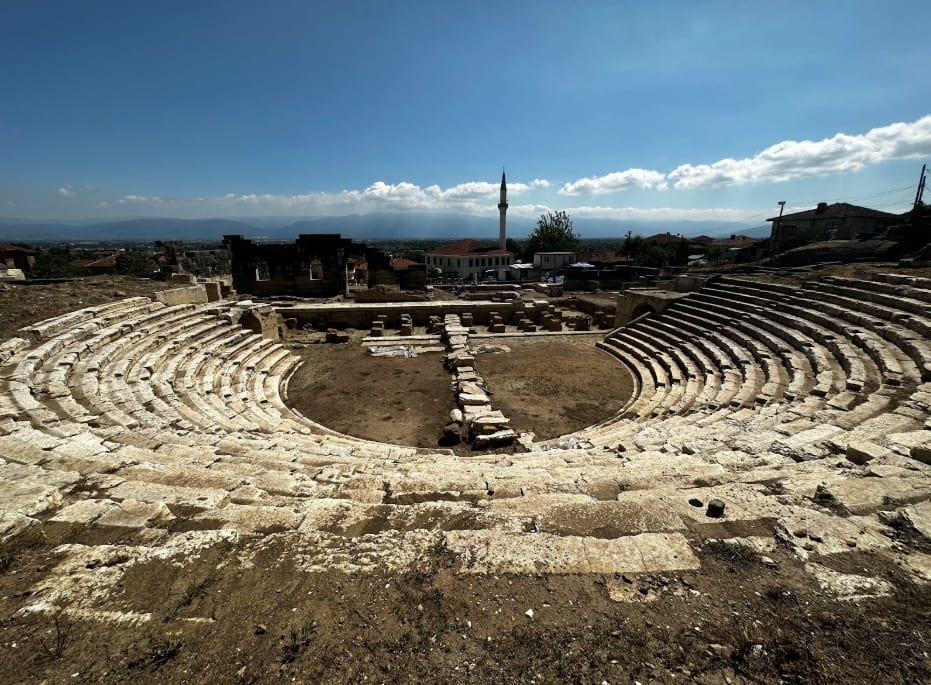Unearthing a Hidden Religious Complex at Konuralp Ancient Theatre
Recent archaeological excavations at the Konuralp Ancient Theatre in Düzce’s Konuralp region, Turkey, have revealed the remains of a chapel and evidence of a larger complex structure believed to date back to the early Byzantine period. This discovery offers new insights into the region’s historical transformation, particularly its shift towards Christianity.
The Konuralp Ancient Theatre, known in antiquity as Prusias ad Hypium, is the only ancient theatre in the Western Black Sea region. It has been the focus of extensive archaeological research, with structures from the Byzantine, Roman, and Ottoman empires uncovered over time. These findings highlight the area’s long-standing cultural and historical significance.
Raşit Aydın, Head of Guidance Services and an art historian at the Konuralp Ancient Theatre, shared his observations on the recent discoveries. “We think there is a chapel here, and there is an apse facing east in front of it,” he said. “As we detailed the structure towards the south, another structure resembling an apse emerged. The structure resembles a large complex. We cannot make a full assessment right now. We also found small mosaic pieces and floor tiles next to it. We think it is a complex structure with a chapel.”
The discovery of an additional apse-like structure suggests that the site may be part of a broader religious or social complex rather than just a small place of worship. Archaeologists have also found small mosaic pieces and floor tiles nearby, which further emphasize the site’s historical importance.
Continuing excavations have revealed a larger structure, and experts believe this area could have served as a church or a special location for the elite during the early Byzantine period. The uncovering of these structures indicates that the region played a significant role during the transition to Christianity.
Aydın explained, “We probably think that the small structure we think is a chapel is early Byzantine. Because both the material quality and the wall bonding techniques are probably from the early Byzantine period. We can say that the continuation of the structure is most likely from either the early Byzantine or middle Byzantine period.”
The Konuralp Ancient Theatre site has yielded numerous historical artifacts and structures, gradually revealing traces of the past. Excavations have been conducted in collaboration with Düzce Municipality and Düzce University, with the goal of uncovering and preserving the rich cultural heritage of the region.
Prusias ad Hypium, one of the 12 cities that formed the Bithynia Union, is estimated to have been built in the 3rd century BCE. The theatre itself stands as a testament to the architectural achievements of the era and has been a focal point for historians and archaeologists alike.
Aydın noted the progress made in the excavations. “Ninety-five percent of the theatre is completed. We are currently working on the surrounding structures. This chapel and the complex structure indicate a major discovery,” he said.
In the southern part of the chapel, a new apse was uncovered during the excavations, suggesting that the structure may be part of a larger complex. “At first, an east-facing apse emerged; then we found another structure resembling an apse, expanding towards the south,” Aydın said. “This shows that the structure is not just a chapel but part of a larger and more complex set of buildings. We also reached a mosaic area, which shows that the structure has important functions.”
These findings continue to reshape our understanding of the region’s history and its role in the broader context of the Byzantine Empire. As excavations progress, more details about the site’s significance are expected to emerge.



